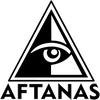About
Like many enduring operations, I started in a garage. Well, half the garage but quickly grew to occupy both sides.
At first the goal was easy: build a few boards for me and some friends. I really never thought about it becoming a commercial endeavour. After 20 boards or so, I thought I was getting pretty good. Around 500, I realized it was going to take years. At about 2000, I understood it was going to take most of a lifetime to truly master.
Around the same time I was exploring the craft in my garage, Sepp Bruwhiler and his brother Raph, were well on their way to becoming Canada’s first professional surfers. A good friend and now renowned photographer, Jeremy Koreski, had brought up the idea of making Sepp a few boards. I did, and got pretty lucky with his first board. He rode it religiously and I started getting a little bit of recognition for my efforts. Not long after, I had a waiting list and within two years, I had outgrown the garage.With demand growing, it was time to make a decision about production. I thought about moving operations offshore where I could rip-off other shaper’s designs, use sweat and child labour to increase profits, and brand my product as Canadian. Just kidding!
I set my mind to creating something that would employ Canadians and add to the local economy. Sitting down with pencil and paper, I sketched out what would be my new digs, complete with solid ventilation for those inside, and filtration for those outside (including the birds, bears and bugs). If I had learned one thing from my first space it was that a purpose-built space would mean efficient surfboard production which in turn would mean more boards, same quality. Again, demand grew. It was time to get serious and go digital.
The progression to a CnC, or shaping machine, was natural (first ever in Canada…or so Canadian Border Services said as they attempted to find an import designation for it). The machine itself was pretty straight forward: a big pile of aluminum designed to take the grunt work out of the shaping process. The real revelations were in the Computer-Aided Design (CAD) software. With accuracy in the .5mm range, and infinite curves and shapes to explore, I put my head down and explored what was possible. It came to be the biggest awakening for me in the last 10 years.
I feel I have arrived in some ways. I have a fully-functioning, clean and efficient shop, an in-house shaping machine, and professionals to work along side of. I spend the majority of my time on what I love the most: designing and finish-shaping surfboards. I stay directly involved with glassing and sanding, which is also done in-house. Staying this involved in production keeps me close to the finished product.
PHILOSOPHY
I didn’t spend the last 20 some odd years thinking of ways to make boards quickly or cheaply. I spent the time thinking of ways to make better boards more accurately and efficiently. I felt that sales would come naturally if the product was honest.
How do we build “honest” surfboards? Design them carefully then construct them well in a safe and efficient environment. Too simple? Well, some say that the best things in life are simple. I tend to agree. Solid designs come from reliable feedback. Luckily I am surrounded by dedicated surfers who have beaches for backyards. Their input creates a constant feedback loop that is plugged back into improving current designs or giving birth to new models.
Materials have always been a no-brainer: buy the best, forget the rest.
Process and space are another story. Untold efforts have been made to create a clean, safe and reliable environment for working with resins and fiberglass fabrics. The best materials and solid processes combined with a well-equipped space result in quality “honest” surfboards.
If you have been in the water once you know how tough the surfing game is. Having professionals you trust, who live and breathe surfing and surfboards, can eliminate guess work and save you from wasting time and money on the wrong equipment. Start a surfer-shaper relationship early and spend more time standing and less time floating.

